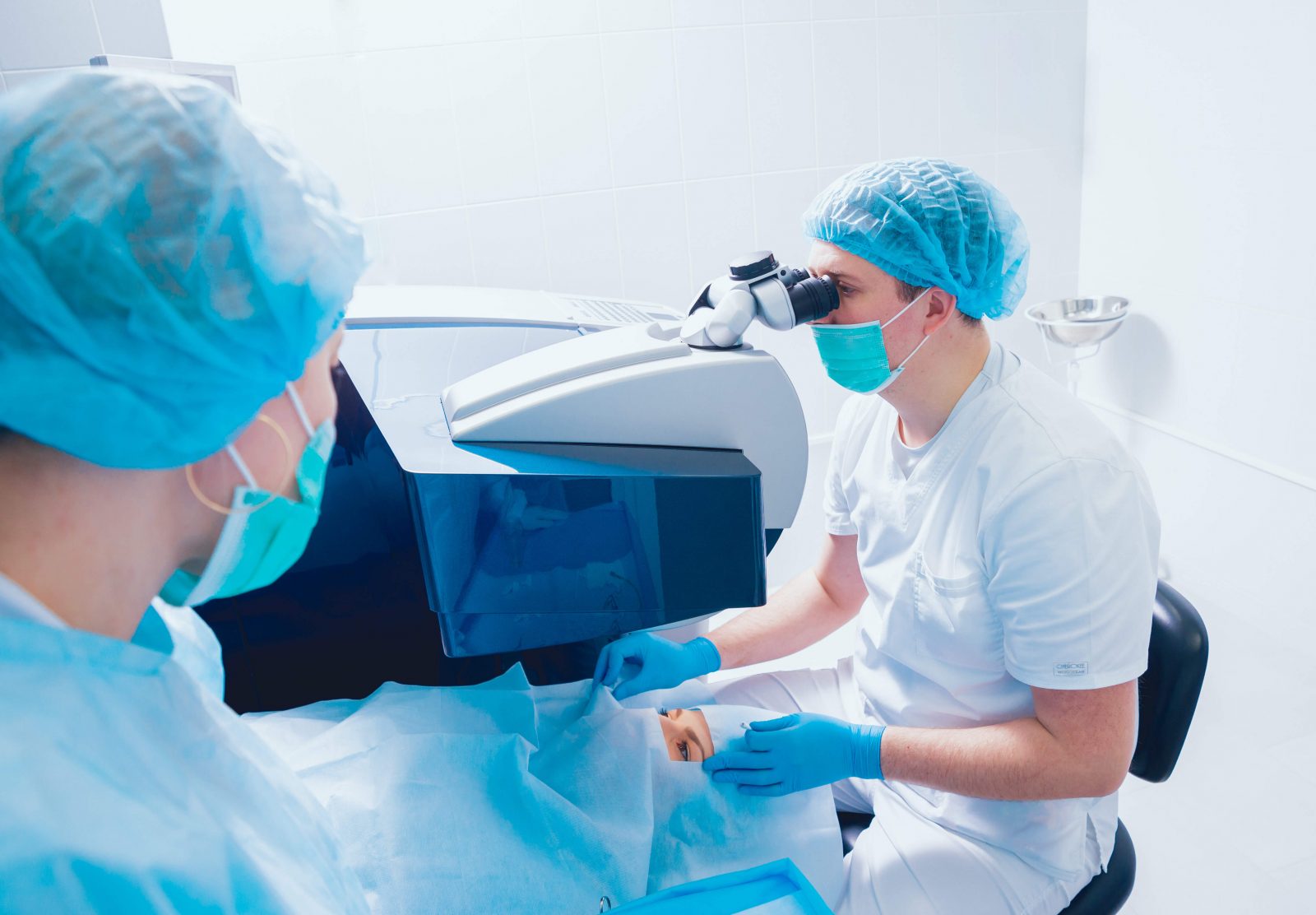Dr. Ella Faktorovich is among the leading ophthalmologists practicing in San Francisco. As an innovator in the development of advanced vision correction treatments, she has achieved worldwide acclaim for her contributions in the field of refractive surgery. Dr. Faktorovich founded Pacific Vision Institute more than twenty years ago. Under her leadership, Pacific Vision Institute is the first in the Bay Area to bring the industry’s newest diagnostic and treatment technologies for LASIK and Cataract Surgery patients. Dr. Faktorovich is the founder and remains the Chair of the Annual San Francisco Cataract, Cornea, and Refractive Surgery Symposium dedicated to the continuing education of the Bay Area eye doctors in refractive surgery and other aspects of advanced patient eye care. She is a recognized leader in this groundbreaking vision correction technique, with her definitive textbook used in educating eye surgeons around the world.
 Photo Credit: Shutterstock
Photo Credit: Shutterstock
LASIK is a popular procedure performed to help patients see better without glasses and contacts. It has been FDA-approved for nearly a quarter of a century. To date, more than 40 million procedures have been performed worldwide with great success. LASIK is approved for patients 18 y.o. and older. We are now operating on the third generation of original LASIK patients. Generation Z, whose grandparents had LASIK in the early ’90s, are coming in for LASIK today.
It’s safe to say, almost everyone knows at least one person who had LASIK. Despite the procedure’s popularity, however, there are a few misconceptions that still exist. Here Haute Beauty expert Dr. Ella Faktorovich discusses the common misconceptions about LASIK that patients will sometimes bring up during their consultation.
1. The laser does all the work.
Confused by marketers who offer to “beat or match prices” for LASIK performed with equal technology, some patients are led to believe that technology does all the work. And while great equipment is important to achieving excellent surgical results, great equipment is like a great racing car, anyone can buy one. Only those with the best skill to drive it and a great team to maintain it will win the race.
We spend time educating patients that they should be comparing different surgeons based on their results with particular technology rather than on whether they simply have access to such technology. Surgeons can easily be compared based on their outcomes generated by an independent statistical outcomes analysis company. Access to this company is available to all surgeons free of charge and regardless of the type of laser equipment they use. The caveat is that clinics must be willing to invest time and resources inputting all of their data into the statistical engine. The data is then subjected to an independent statistical analysis, called regression analysis. Such a process not only assures accuracy in planning patient treatments, based on the outcomes of previous patients but also allows comparison of individual surgeons’ outcomes based on how likely they are to achieve better than 20/20 vision.
We routinely provide our results to every patient. Nico Rosberg, a German driver who won the Formula One World Championship in 2016, has often emphasized not only the driver’s abilities but also the skill and knowledge of the team in the winner’s success. LASIK eye surgery lasers are very complex and sensitive machines. The work we do with them is measured in sub-microns. In order to perform perfectly, the lasers need to be continuously tested and their performance-optimized to make sure the treatment energy they deliver stays within a narrow range of optimized parameters. Such work is best done by laser engineers present on-site and running the lasers during patient treatments. The educational background of such individuals, not just their experience, is essential to their ability to optimize laser performance for each patient.
2. It takes a long time to recover after LASIK.
Actually, it takes less than a day to recover from LASIK. Patients often think it takes more time to recover from LASIK than it usually does. We advise patients to keep their eyes closed for 4 hours after LASIK surgery. Most patients like to take a nap or listen to podcasts or books on tape during that time. After that, they can even go out to dinner. Typically, patients return to work the very next day. We recommend not getting water in their eyes for about a week, but otherwise, patients typically resume their usual activities the day after LASIK, including running, biking, and working out.
 Photo Credit: Shutterstock
Photo Credit: Shutterstock
3. LASIK will “wear off” over time.
LASIK is a permanent vision correction. However, as we age, we all experience presbyopia (the need for reading glasses) while distance vision remains good. As we age, we may also develop cataracts – opacities or yellowing of our natural lens. Cataracts may cause changes in the eye prescription or blurry vision. Cataract surgery will then be performed to restore vision. In a very small percentage of LASIK patients, a small amount of their initial prescription may come back. Such prescription can then be corrected with an additional laser.
4. LASIK will get cheaper over time.
The fees for LASIK vary depending on a number of factors. For example, the surgeon’s skill, their team’s qualifications, diagnostic and treatment technology, and what’s included in the fee are some of the important factors determining the fee. The fees have increased since the early days of the procedure but have stayed relatively stable in the past 10 years.
5. If someone is not a good candidate for LASIK, there is nothing else that can be done.
Not everyone is a LASIK candidate. But LASIK is not the only type of surgery that can be done to successfully reduce or eliminated dependence on glasses and contacts. Patients with thin corneas, uneven corneas, patients whose prescriptions are not in the range for LASIK, can often be treated with other procedures. Photorefractive Keratectomy (PRK) is an excellent alternative and so are the Implantable Collamer Lens (ICL) surgery and Refractive Lens Exchange (RLE) surgery. Patients shouldn’t get discouraged if they are told they are not a LASIK candidate and should seek a second opinion from surgeons who perform different types of refractive surgeries.
For more information, visit Dr. Brian A. Levine's social media:

























